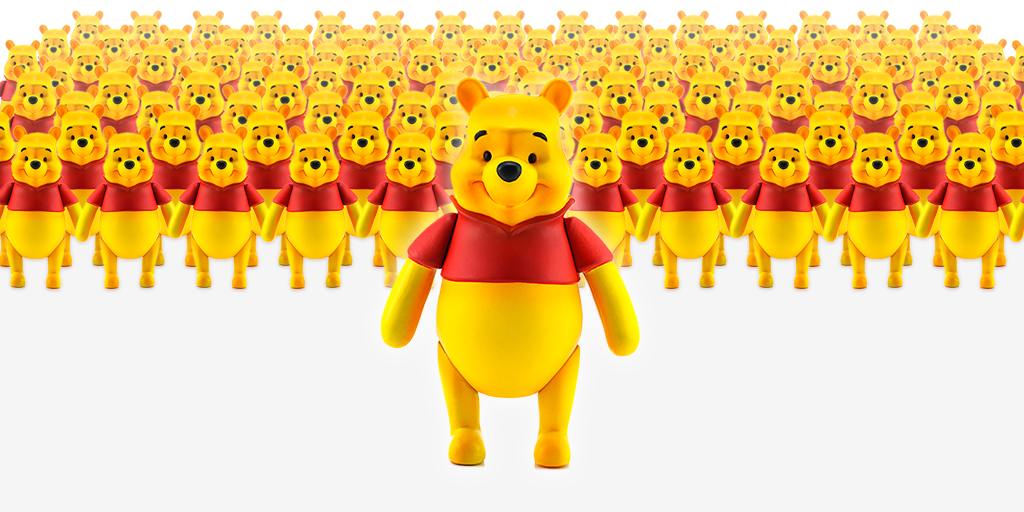
“The things that make me different are the things that make me, me”
— Winnie the Pooh
Public domain refers to creative works that are no longer covered by copyright.
With certain exceptions, the timeframe for copyright protection is 50 or 70 years after the author’s death, depending on the country.
- • Public domain explained in French: Le domaine public — C’est quoi ?
Pooh Bear free to roam
For example, the text and images from the book Winnie-the-Pooh are among the many works that became copyright-free on January 1, 2022.
When content enters the public domain, it can be used by anyone without having to request permission.
In this case, the text written by Alan Alexander (A.A.) Milne and the illustrations crafted by Ernest Howard (E.H.) Shepard in the Winnie the Pooh book published in 1926 can now be used by any independent producer.
Wait a minute...
When you hear about the different copyright timeframes, you may find them confusing…
In Canada, the Copyright Act specifies a term of 50 years after the author’s death before the content can be used without having to ask permission.
Even though the copyright on Winnie-the-Pooh expired only this year in the U.S., the book actually entered the public domain in Canada 15 years ago (2007), which was 50 years after Milne’s death in 1956.
A matter of territory
This Canada/U.S. difference is a good demonstration of a basic principle: copyright is territorial. That means copyright applies according to the location where the content is used, NOT the origin of the author.
Copyright legislation in the U.S. specifies a period of 70 years after the author’s death OR 95 years after the first publication if the rights to the content have been assigned to a corporation, as was the case for Winnie the Pooh and The Walt Disney Company.
That explains why it took so long for the “silly old bear” to enter the public domain... in the U.S.





